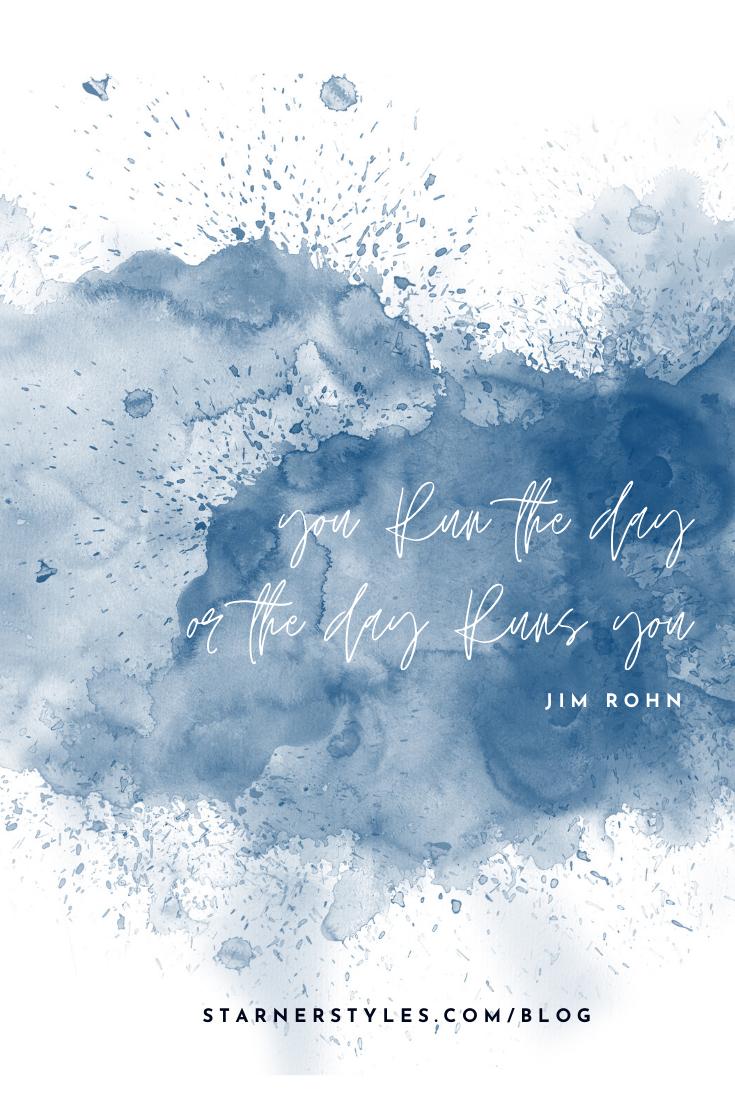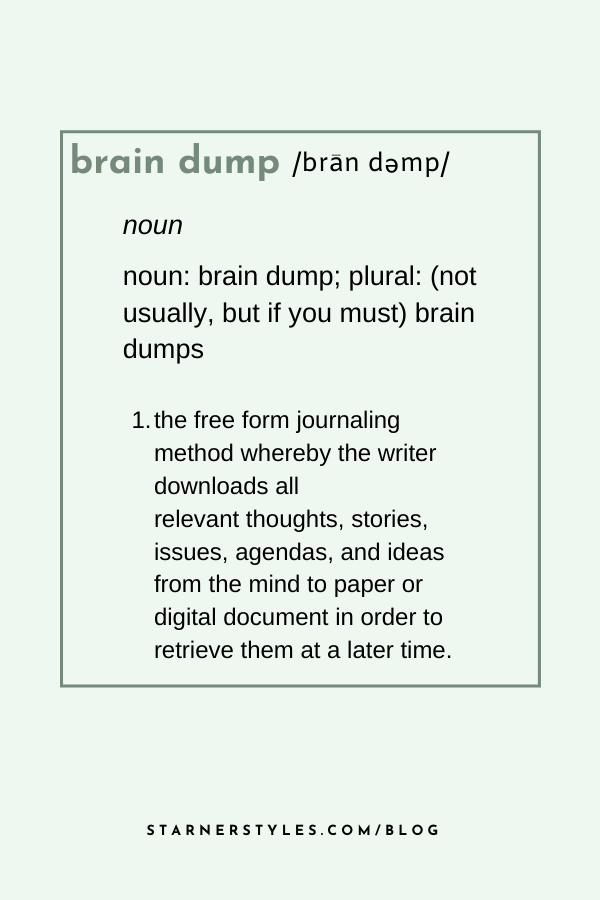Start Here to Reduce Stress and Create Ease
Posted by Starner Styles on Dec 9th 2019
With a to-do list a mile and a half long, sticky notes all over your desk and hall mirror, and reminders buzzing in your phone, it is a wonder that anyone can stay sane. I mean, if you don’t keep it together, who will, right? It takes everything we’ve got sometimes to keep all the cogs working and well oiled in the constantly-ticking clock that is Life. So you might scramble to find the best productivity and scheduling apps, the latest and most streamlined journals, the snazziest wall calendar. Anything to keep treading water, moving forward, do the thing.
But do you ever feel like you’re always busy but at the end of the day when you finally sit down, you are wondering what in the world you actually did that day? Until I got super purposeful and set intentions with my schedule, that was definitely me. I’d hustle all day, juggling ALL.THE.THINGS, and at night, I’d finally decide to shut the laptop and be completely confused about why I felt like I accomplished nothing. Sound familiar?

Until I implemented two key strategies I was always chasing my tail, doing mountains of work but always feeling behind. Discovering these two things even helped reduce my stress and created easier workloads. At the close of the first week when I integrated these two concepts, I felt like an empowered upgraded version of myself. Me 2.0. This is what I did...
I Set Boundaries
I set aside some actual planning time and brain dumped everything that didn’t work about my scheduling habits, all the things that made me feel inadequate, lacking, ineffective and so on. Then I brain dumped all the of the moments I felt like I was on top of my day, the world around that, what my morning looked like, how I’d set it up and so on. Brain dumping is not a time to edit, to make sure [ all you’re grammor is corretc ]. When you’re getting your ideas onto the page, you must allow your thoughts to flow from your mind to your pen without gate-keeping as quickly as possible. Doing it this way is going to give you the most amount of content to work with and a truer, more raw snapshot at what is actually going on in your brain. At the end of the page, I just reread it and drew some conclusions about how my mind operated.

Gathering this insight was critical to the next step. I discovered some super telling things about how I operated and what made a productive day versus an unproductive day, what my preferences are, and what gets in the way. From there, I was able to set up boundaries. Putting limitations and non-negotiables in place was tricky, but when I follow them, I have the most rewarding days.
With the goal of this being how to reduce stress and create ease, I am making some category prompts to help you achieve clarity:
- What is working with my schedule? What apps, journals, systems allow me to maximize my time?
- When did I last feel unproductive?... I felt that way because…
- When I last felt accomplished and productive, I was:
- Alone
- In a busy place
- At home
- Had music on
- Had silence
- Had my phone nearby
- My phone was off or Do Not Disturb was on
- Had an agenda pre-written
- Had no agenda pre-written
- Had a deadline or something to keep me accountable
- Went ahead with no solid deadlines
- What adds stress to my life?
- What things have I said “yes” to that I regretted later?
- Am I batching similar tasks or doing things as they come up without a structure?
You can continue down this line of thinking, asking focused questions about your time, tasks, and to-do list until you fill up a page. The more rapid-fire you go, the better the outcome because you aren’t allowing yourself to edit. The answers are more real and will drill down to the root of your stress issues. If I were to take a guess, I’d say that a good portion of your stress comes from taking on too many projects and too much responsibility. You’ve said yes way too often and now you’re juggling a bunch of chainsaws. Although this may not be the only cause of stress, it is the easiest one to fix. You can instantly reduce your anxiety levels by setting boundaries and learning the value of saying no.
So, turn on some Chillhop (my favorite YouTube music playlist), turn off artificial lights, light some candles (or whatever feels good to you), open a real-life notebook and begin writing. The process itself is freeing but even more so when you begin to notice patterns and unearth deeply ingrained habits, rituals, or reactions you have to your environment. Gaining clarity around why time is an important part of the process in reducing your anxiety around your workload. Find your way back here next week because we are diving in deeper into setting boundaries.
